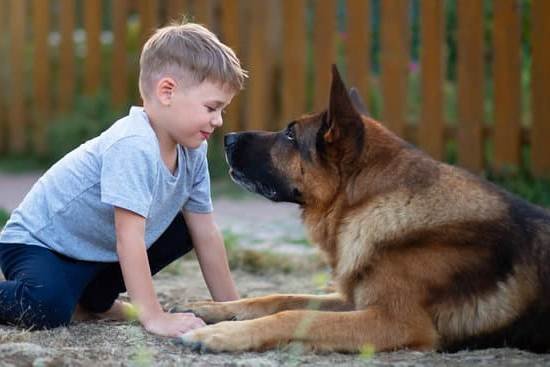Can you train a pet dog for hearing loss? Hearing loss in dogs is a common condition that can be challenging for both the pet and its owners. Just like humans, dogs can also experience hearing loss due to various factors such as genetics, old age, or underlying health issues. Recognizing the signs and symptoms of hearing loss in your furry companion is crucial in providing the necessary support and care.
Signs of hearing loss in dogs may include unresponsiveness to sounds, excessive barking, difficulty following commands, or being easily startled. Factors like exposure to loud noises, ear infections, or specific breeds prone to deafness can contribute to hearing impairment in dogs. As responsible pet owners, it is essential to understand these factors and take proactive steps to address your dog’s hearing loss effectively.
Training a pet dog for hearing loss can significantly improve their quality of life and strengthen the bond between you and your furry friend. By implementing specialized training techniques and using visual cues and signals instead of auditory commands, you can help your hearing-impaired dog navigate the world confidently. In the following sections, we will explore the importance of training a pet dog for hearing loss and provide valuable tips and resources for success.
Signs and Symptoms of Hearing Loss in Dogs
Hearing loss in dogs can be a challenging condition to identify, as they may adapt well to their surroundings and rely on their other senses. However, there are certain signs and symptoms that pet owners should look out for. One common sign is if your dog does not respond to sounds that would normally grab their attention, such as the doorbell ringing or their name being called. Additionally, some dogs may startle easily or seem disoriented when unexpected noises occur.
Another indicator of hearing loss in dogs is if they become more aloof or less engaged with their environment. They may also show signs of confusion or anxiety when they cannot locate the source of a sound. Some breeds are more prone to hearing loss than others, so it is important for pet owners to be aware of any genetic predispositions that their dog might have.
It is crucial for pet owners to observe their dog closely and consult with a veterinarian if they suspect hearing loss. Early detection can help in managing the condition effectively and making adjustments to accommodate the needs of a hearing-impaired dog. With proper training and support, dogs with hearing loss can lead happy and fulfilling lives alongside their human companions.
| Signs of Hearing Loss | Symptoms of Hearing Loss |
|---|---|
| Lack of response to familiar sounds | Increased startle response |
| Altered behavior or increased anxiety | Aloofness and disengagement |
Factors That Can Cause Hearing Loss in Dogs
Genetic Factors
Genetic factors play a significant role in predisposing dogs to hearing loss. Certain breeds, such as Dalmatians and Australian Cattle Dogs, are more prone to congenital deafness due to inherited genes. Responsible breeding practices can help reduce the incidence of genetic-related hearing loss in puppies. It is important for dog owners and breeders to be aware of the potential genetic factors that may contribute to hearing impairment in dogs.
Age-Related Hearing Loss
Just like in humans, age-related hearing loss can also affect our canine companions as they grow older. As dogs age, their sensory functions can decline, including their ability to hear. This gradual loss of hearing can impact a dog’s quality of life and interactions with their environment. Understanding the signs of age-related hearing loss can help pet owners provide appropriate care and support for their senior dogs.
Acquired Hearing Loss
Dogs can also experience acquired hearing loss due to various factors such as ear infections, injury to the ear canal or eardrum, exposure to loud noises, or certain medical conditions like ototoxicity caused by medications. It is essential for pet owners to monitor their dog’s overall health and seek veterinary care promptly if any changes in their pet’s hearing abilities are noticed.
Early detection and treatment can you train a pet dog for hearing loss effectively involves identifying and addressing the underlying causes of acquired deafness in dogs.
Importance of Training a Pet Dog for Hearing Loss
Hearing loss can greatly impact a dog’s quality of life, as it hinders their ability to communicate, navigate their environment, and respond to potential dangers. Therefore, it is crucial for pet owners to understand the importance of training a deaf or hearing-impaired dog. Training a pet dog for hearing loss not only enhances their safety and well-being but also strengthens the bond between the owner and their furry companion.
To effectively train a pet dog for hearing loss, it is important to establish alternative methods of communication. Utilizing visual cues, such as hand signals or flashing lights, can help in conveying commands and cues to a deaf dog. Consistency is key in training a hearing-impaired dog, as they rely heavily on routine and repetition to understand and respond to various commands. Additionally, positive reinforcement through treats or praise can motivate a deaf dog to engage in training sessions.
Benefits of Training a Pet Dog for Hearing Loss
- Enhances the safety and well-being of the hearing-impaired dog
- Strengthens the bond between the owner and their furry companion
- Provides alternative methods of communication through visual cues
- Promotes consistency and routine in training sessions
- Motivates the deaf dog through positive reinforcement
Overall, training a pet dog for hearing loss requires patience, dedication, and understanding from both the owner and the furry friend. With proper training techniques and consistent practice, hearing-impaired dogs can navigate their world confidently and thrive in their environment.
Additional Resources for Training Hearing-Impaired Dogs
- American Kennel Club: Obedience Training Tips for Deaf Dogs
- Deaf Dogs Rock: Online Training Resources for Hearing-Impaired Dogs
- The Whole Dog Journal: Communicating with Deaf Dogs Guidebook
The Process of Training a Pet Dog for Hearing Loss
Training a pet dog for hearing loss can be a rewarding and enriching experience for both the dog and its owner. It is essential to understand that just like humans, dogs can also experience hearing impairment due to various factors. By providing proper training and support, owners can help their hearing-impaired dogs lead fulfilling lives.
The first step in training a pet dog for hearing loss is to establish clear communication methods. This includes using visual cues such as hand signals or body language to convey commands or messages to the dog. Consistency is key in training, so it is important to use the same signals consistently to avoid confusion.
In addition to visual cues, owners can also utilize other senses such as touch and smell to communicate with their hearing-impaired dogs. For example, gentle touches or specific scents can be used as positive reinforcement during training sessions. By incorporating multiple senses into the training process, owners can create a holistic approach that caters to the specific needs of their hearing-impaired canine companions.
| Training Methods | Description |
|---|---|
| Visual Cues | Use hand signals or body language consistently during training. |
| Multi-Sensory Approach | Incorporate touch and smell along with visual cues for effective communication. |
Tips and Techniques for Training a Hearing-Impaired Dog
Use Hand Signals and Visual Cues
One of the most effective ways to communicate with a hearing-impaired dog is through hand signals and visual cues. Instead of relying on verbal commands, use gestures that your dog can easily understand. For example, you can teach your dog to sit by raising your hand up and then bringing it down. Consistency is key when using hand signals, so make sure to practice regularly with your pet.
Positive Reinforcement Training
Positive reinforcement training works wonders for all dogs, including those with hearing loss. Use treats, toys, or praise to reward your furry friend when they successfully follow a command or exhibit desired behavior. This form of training not only helps in building a strong bond with your pet but also encourages good behavior through positive associations.
Implement Routine Training Sessions
Consistency is crucial when training a hearing-impaired dog. Set aside regular time each day for short training sessions to reinforce commands and improve communication between you and your pet. Keep the sessions fun and engaging to maintain your dog’s interest. Remember that patience and perseverance are essential elements for successful training outcomes.
By implementing these tips and techniques, you
Real-Life Success Stories of Hearing-Impaired Dogs
Here are some heartwarming real-life success stories of pet owners who have trained their hearing-impaired dogs to live fulfilling lives despite their challenges:
1. Bailey and His Service Dog Training: Bailey, a Labrador Retriever, lost his hearing due to a congenital condition. His owner, Sarah, decided to train him as a service dog to help her navigate her daily life. Through consistent training and positive reinforcement, Bailey learned to respond to hand signals and vibrations. Now, Bailey alerts Sarah when the doorbell rings or when someone is calling her name. Their strong bond has only strengthened through this training process.
2. Luna’s Agility Training: Luna, a rescue dog who developed hearing loss in her senior years, found a new lease on life through agility training. Her owner, Mark, introduced Luna to obstacle courses that relied heavily on visual cues and gestures. Luna quickly picked up on the commands and now thrives in agility competitions for hearing-impaired dogs. The training not only keeps Luna physically active but also boosts her confidence and mental stimulation.
3. Remy the Therapy Dog: Remy, a mixed breed dog who was born deaf, found his calling as a therapy dog at a local hospital. With proper training from his devoted owner Amanda, Remy learned sign language commands to comfort patients in need of emotional support. Remy’s gentle nature and ability to connect with people transcends his disability and he has become a beacon of hope for many patients at the hospital.
Hearing loss may present challenges for pet dogs, but with dedication and proper training techniques, they can lead happy and fulfilling lives while making a positive impact on those around them. Whether it’s through service work like alerting their owners or participating in activities like agility training or therapy work, hearing-impaired dogs can thrive with patience and love from their owners along with tailored training methods specifically designed for them.
Resources and Tools for Training a Pet Dog for Hearing Loss
Training a pet dog for hearing loss can be a challenging but rewarding experience for both the owner and the canine companion. It is important to have the right resources and tools to effectively communicate with and train a hearing-impaired dog. One of the most essential resources for training a deaf dog is hand signals.
Using visual cues instead of verbal commands is key in helping your furry friend understand what you want them to do. There are various hand signals that can be used for basic commands such as sit, stay, come, and more.
Another useful tool for training a pet dog with hearing loss is vibration collars or vibrating training devices. These tools provide tactile feedback to get the attention of your deaf dog during training sessions. The vibration can serve as a signal for rewards or corrections, making it a valuable tool in reinforcing desired behaviors.
Additionally, incorporating positive reinforcement techniques such as treats, praise, and playtime into training sessions can help motivate and encourage a hearing-impaired dog to learn new behaviors. Consistency, patience, and understanding are also crucial when training a pet dog with hearing loss. By providing clear communication and using effective tools and resources, owners can successfully train their beloved pets to adapt to their hearing impairment and thrive in their environment.
Conclusion
Training a pet dog for hearing loss can be a rewarding experience not only for the dog but also for the owner. By providing specific training to address the challenges that come with hearing impairment, you can improve your dog’s quality of life and strengthen your bond with them. Through patience, consistency, and utilizing the right techniques, deaf dogs can thrive in their environment just like any other pet.
One of the key benefits of training a hearing-impaired dog is enhancing their communication skills. By using visual cues, hand signals, and positive reinforcement techniques, you can effectively communicate with your deaf pet and ensure they understand your commands. This type of training not only helps in establishing clear communication but also boosts your dog’s confidence and overall well-being.
Moreover, training a pet dog for hearing loss opens up opportunities for them to engage in various activities and socialize with other pets and humans. With proper training, hearing-impaired dogs can participate in agility courses, obedience training, or even therapy work.
This not only provides mental stimulation and physical exercise but also allows them to lead a fulfilling life despite their hearing impairment. Embracing the journey of training a deaf dog can truly be enriching and rewarding for both the owner and the furry companion.
Frequently Asked Questions
What Is the Best Dog for a Hearing Impaired Person?
The best type of dog for a hearing-impaired person is often a trained service dog, specifically bred and trained to assist with hearing-related tasks. Breeds like Labrador Retrievers or Cocker Spaniels are commonly chosen for their intelligence and trainability.
Can a Clients Own Dog Be Trained to Become a Deaf Assistance Dog?
Yes, a client’s own dog can potentially be trained to become a deaf assistance dog with the help of professional trainers. However, not all dogs may have the temperament, skills, or aptitude required for this specialized training, so it’s crucial to assess the individual dog first.
Can Dogs Help With Hearing Loss?
Dogs can indeed be of great help to individuals experiencing hearing loss. They can alert their owners to important sounds like alarms, doorbells, or someone calling their name. Additionally, dogs provide emotional support and companionship that can significantly improve the overall well-being of someone with hearing loss.

Welcome to the blog! I am a professional dog trainer and have been working with dogs for many years. In this blog, I will be discussing various topics related to dog training, including tips, tricks, and advice. I hope you find this information helpful and informative. Thanks for reading!





